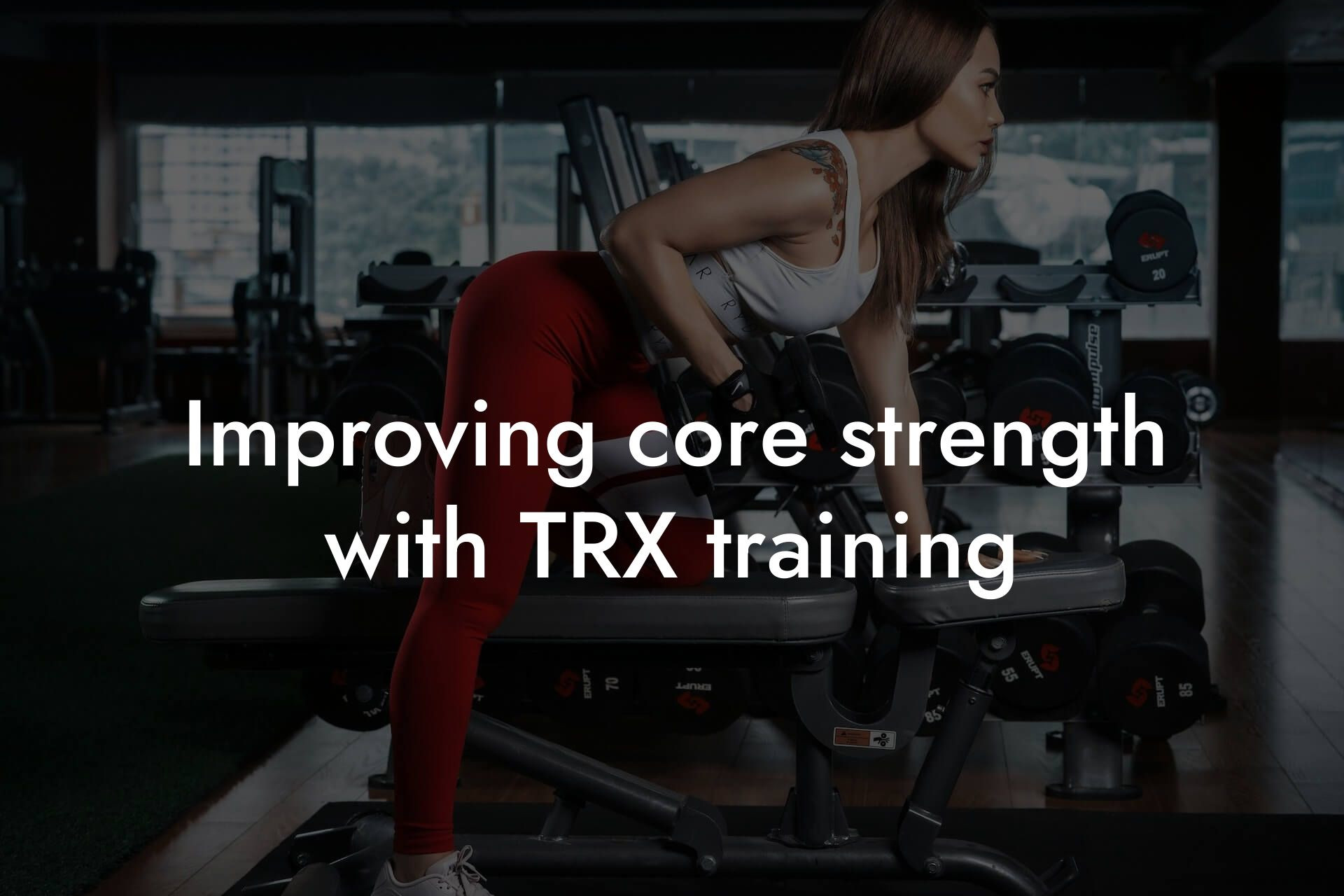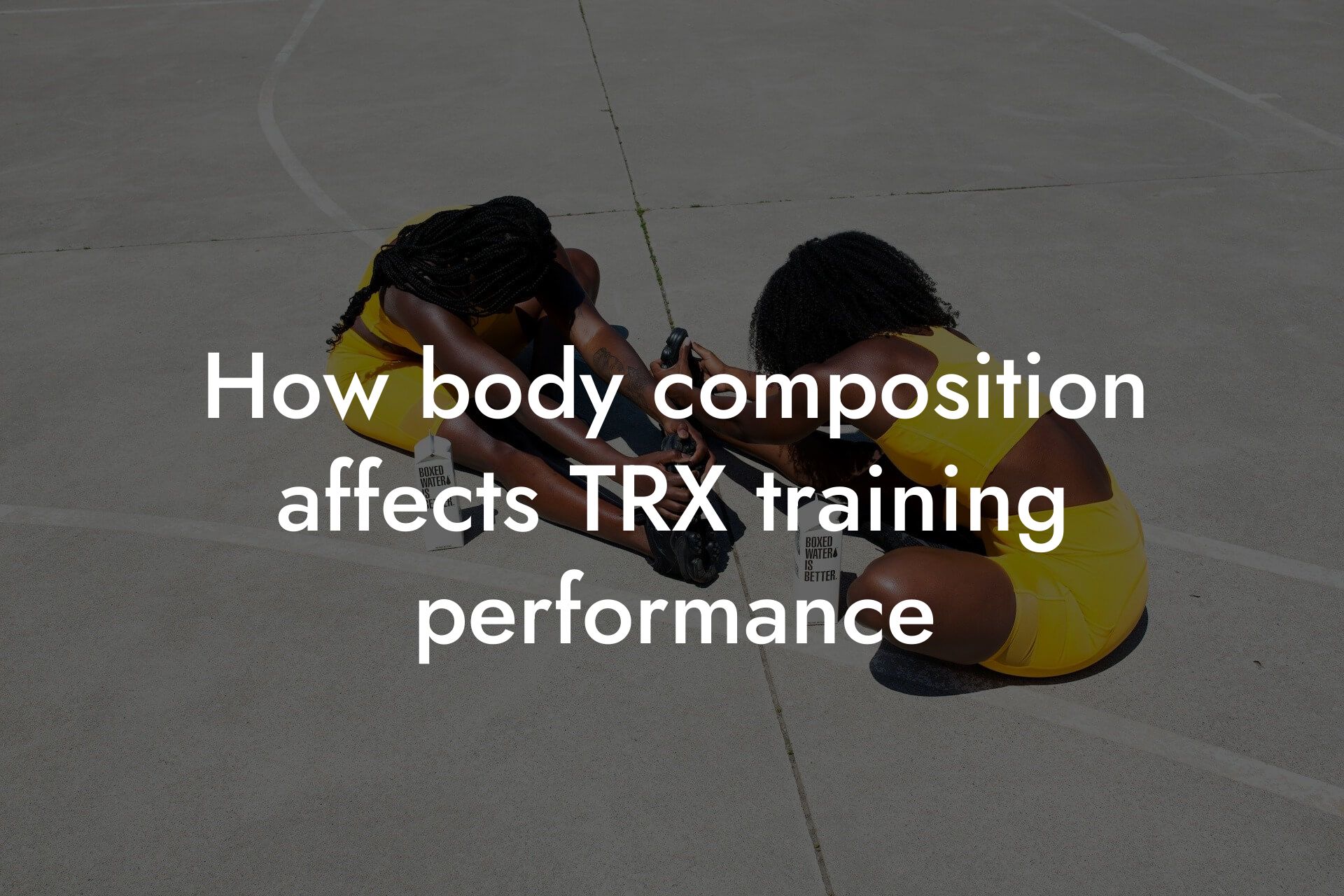As a high-earning professional, you understand the importance of maintaining a strong and flexible body to keep up with the demands of your busy lifestyle. TRX workouts have become a popular choice for many, offering a low-impact, high-intensity way to improve overall fitness. However, it's crucial to balance strength and flexibility in your TRX workouts to avoid injuries, improve performance, and achieve your fitness goals. In this article, we'll delve into the importance of balancing strength and flexibility, how to achieve it, and provide tips for incorporating flexibility exercises into your TRX routine.
Table of Contents
Why Balance Strength and Flexibility?
When it comes to TRX workouts, many individuals focus solely on building strength, neglecting the importance of flexibility. However, neglecting flexibility can lead to a range of issues, including:
- Injuries: Tight muscles and joints increase the risk of injury, particularly in the shoulders, hips, and lower back.
- Reduced performance: Inflexibility can limit your range of motion, making it difficult to perform exercises efficiently and effectively.
- Poor posture: Weak and inflexible muscles can lead to poor posture, putting unnecessary strain on your joints and muscles.
- Decreased mobility: A lack of flexibility can make everyday activities, such as bending or twisting, more challenging.
The Benefits of Flexibility in TRX Workouts
Incorporating flexibility exercises into your TRX routine can have a significant impact on your overall fitness and well-being. Some of the benefits include:
- Improved range of motion: Increased flexibility allows for a greater range of motion, making exercises more efficient and effective.
- Enhanced athletic performance: Flexibility exercises can improve power, speed, and agility, taking your athletic performance to the next level.
- Injury prevention: Flexible muscles and joints are less prone to injury, reducing the risk of strains and pulls.
- Improved posture: Strong and flexible muscles help maintain good posture, reducing the risk of back and joint pain.
How to Balance Strength and Flexibility in TRX Workouts
Achieving a balance between strength and flexibility requires a thoughtful approach to your TRX workout routine. Here are some tips to get you started:
- Warm up and cool down: Incorporate dynamic stretching exercises into your warm-up and cool-down routines to improve flexibility and reduce muscle tension.
- Incorporate flexibility exercises: Add flexibility exercises to your TRX routine, focusing on exercises that target key muscle groups, such as the hamstrings, quadriceps, and hip flexors.
- Use progressive overload: Gradually increase the intensity of your TRX workouts by adding weight, reps, or sets to challenge your muscles and improve strength.
- Focus on functional exercises: Incorporate functional exercises that mimic daily activities, such as squats, lunges, and step-ups, to improve strength and flexibility in a functional way.
Flexibility Exercises for TRX Workouts
Here are some flexibility exercises you can incorporate into your TRX routine:
- Hamstring stretch: Stand facing away from the TRX anchor point, with your feet shoulder-width apart. Slowly lean forward, keeping your knees straight, until you feel a stretch in the back of your legs.
- Quadriceps stretch: Stand facing the TRX anchor point, with one hand on the strap and the other on your hip. Bend your knee, keeping your foot behind you, until you feel a stretch in the front of your leg.
- Hip flexor stretch: Kneel on the floor, with the TRX strap around your back. Slowly lean forward, keeping your back straight, until you feel a stretch in the front of your hip.
- Chest stretch: Stand facing away from the TRX anchor point, with your hands on the strap at shoulder height. Lean forward, stretching your chest and shoulders.
Incorporating Flexibility Exercises into Your TRX Routine
To incorporate flexibility exercises into your TRX routine, try the following:
- Start with 2-3 flexibility exercises per workout, focusing on different muscle groups.
- Perform flexibility exercises after your strength training exercises, when your muscles are warm.
- Hold each stretch for 20-30 seconds, breathing deeply and slowly.
- Incorporate flexibility exercises 2-3 times per week, allowing for adequate recovery time.
Common Mistakes to Avoid
When incorporating flexibility exercises into your TRX routine, it's essential to avoid common mistakes that can lead to injury or ineffective training. Here are some common mistakes to avoid:
- Bouncing or jerking: Avoid bouncing or jerking movements when stretching, as this can cause micro-tears in the muscle tissue.
- Overstretching: Don't push past pain or discomfort when stretching. This can lead to injury or strain.
- Inadequate warm-up: Failing to warm up properly before stretching can lead to muscle strain or injury.
- Inconsistent stretching: Failing to incorporate flexibility exercises regularly can lead to inconsistent progress and increased risk of injury.
Balancing strength and flexibility is crucial for achieving optimal fitness and avoiding injuries in TRX workouts. By incorporating flexibility exercises into your routine, you can improve your range of motion, enhance athletic performance, and reduce the risk of injury. Remember to warm up and cool down properly, focus on functional exercises, and incorporate flexibility exercises regularly to achieve a balanced and effective TRX workout routine.
At Tano Performance Group, we understand the importance of achieving a balanced fitness routine. Our DEXA machine provides a comprehensive body assessment, giving you the information you need to take your fitness to the next level. Contact us today to learn more about our services and how we can help you achieve your fitness goals.
Frequently Asked Questions
What is TRX and how does it benefit my overall fitness?
TRX, or Total Body Resistance Exercise, is a form of suspension training that uses your body weight and gravity to provide resistance. This type of training benefits your overall fitness by improving strength, flexibility, balance, and core stability. As a high-earning professional, incorporating TRX into your workout routine can help you achieve your fitness goals and maintain a healthy, toned physique.
How does TRX differ from traditional weightlifting?
TRX differs from traditional weightlifting in that it uses your body weight as resistance, rather than relying on heavy weights or machines. This approach allows for a more functional and dynamic workout, engaging multiple muscle groups simultaneously and improving overall flexibility and range of motion.
Is TRX suitable for beginners, or do I need prior experience?
TRX is suitable for individuals of all fitness levels, including beginners. The exercises can be modified to accommodate different fitness levels, and our certified trainers can provide guidance and support to ensure a safe and effective workout.
What are the benefits of incorporating TRX into my workout routine?
Incorporating TRX into your workout routine can improve overall strength, flexibility, and balance. It can also increase calorie burn, boost metabolism, and enhance athletic performance. Additionally, TRX can help improve posture, reduce injury risk, and increase functional movement patterns.
How often should I do TRX workouts to see results?
We recommend incorporating TRX workouts into your routine 2-3 times per week, allowing for at least one day of rest in between. Consistency is key, so aim to make TRX a regular part of your fitness routine.
Can I do TRX workouts at home, or do I need to join a gym?
You can do TRX workouts at home with a TRX suspension trainer, which can be purchased online or at a local fitness store. However, working with a certified TRX trainer at a gym or studio can provide additional guidance, support, and motivation.
How long does a typical TRX workout last?
A typical TRX workout can last anywhere from 30-60 minutes, depending on the intensity and complexity of the exercises. Our certified trainers can help you create a customized workout plan that fits your schedule and fitness goals.
What are some common mistakes to avoid when doing TRX workouts?
Common mistakes to avoid when doing TRX workouts include using poor form, not engaging your core, and not adjusting the straps to the correct length. It's also important to listen to your body and not push yourself too hard, especially if you're new to TRX.
How does TRX help improve flexibility and range of motion?
TRX helps improve flexibility and range of motion by incorporating dynamic movements that engage multiple joints and muscle groups simultaneously. This approach helps increase flexibility, reduce stiffness, and improve overall mobility.
Can TRX help with weight loss and fat reduction?
Yes, TRX can help with weight loss and fat reduction. The high-intensity, calorie-burning exercises can help increase your metabolism and burn fat, while the strength-training exercises can help build lean muscle mass.
How does TRX benefit my core strength and stability?
TRX benefits your core strength and stability by engaging your core muscles in every exercise. This helps improve posture, reduce back pain, and increase overall athletic performance.
Can I modify TRX exercises to accommodate injuries or physical limitations?
Yes, TRX exercises can be modified to accommodate injuries or physical limitations. Our certified trainers can work with you to create a customized workout plan that takes into account any physical limitations or injuries.
How does TRX improve my bone density?
TRX improves bone density by incorporating weight-bearing exercises that stimulate bone growth and density. This is especially important for high-earning professionals who may have a higher risk of osteoporosis or bone loss.
Can I use TRX as a standalone workout routine, or should I combine it with other forms of exercise?
You can use TRX as a standalone workout routine, but combining it with other forms of exercise, such as cardio or strength training, can provide a more well-rounded fitness routine and help you achieve your goals faster.
How does TRX improve my posture and reduce back pain?
TRX improves posture and reduces back pain by strengthening the muscles that support your spine and improving your overall flexibility and range of motion. This can help reduce back pain, improve posture, and increase overall mobility.
Can I do TRX workouts with a partner or in a group setting?
Yes, TRX workouts can be done with a partner or in a group setting. This can provide additional motivation, support, and accountability, and can be a fun and social way to stay active and healthy.
How does TRX benefit my athletic performance and overall fitness?
TRX benefits your athletic performance and overall fitness by improving strength, flexibility, balance, and core stability. This can help enhance your performance in other sports and activities, and improve your overall fitness and well-being.
Can I use TRX to rehabilitate from an injury or surgery?
Yes, TRX can be used to rehabilitate from an injury or surgery. The low-impact, controlled movements can help improve strength, flexibility, and range of motion, and can be modified to accommodate physical limitations or injuries.
How does TRX improve my overall body composition?
TRX improves your overall body composition by increasing lean muscle mass, reducing body fat, and improving overall flexibility and range of motion. This can help you achieve a more toned, lean, and athletic physique.
Can I incorporate TRX into my busy schedule, even if I have limited time?
Yes, TRX can be incorporated into your busy schedule, even if you have limited time. Our certified trainers can help you create a customized workout plan that fits your schedule and fitness goals, and can provide guidance on how to make the most of your limited time.
How does TRX benefit my mental health and overall well-being?
TRX benefits your mental health and overall well-being by reducing stress, improving mood, and increasing feelings of confidence and self-esteem. The physical activity can also help improve sleep quality and reduce symptoms of anxiety and depression.
Here are some related articles you might love...
- Improving core strength with TRX training
- Using DEXA scans to monitor progress in TRX training
- How body composition affects TRX training performance
- The importance of bone density in TRX fitness
- Strength training tips specific to TRX exercises
- Reducing body fat for better TRX workout results
- Nutrition tips for sustained energy during TRX sessions
- Maintaining muscle recovery with TRX training
- Preventing injuries during TRX training
Zak Faulkner
Zak Faulkner is a leading authority in the realm of physical health and body composition analysis, with over 15 years of experience helping professionals optimise their fitness and well-being. As one the experts behind Tano Performance Group, Zak has dedicated his career to providing in-depth, science-backed insights that empower clients to elevate their physical performance and overall health.
With extensive knowledge of DEXA technology, Zak specializes in delivering comprehensive body assessments that offer precise data on body fat, muscle mass, bone density, and overall physique. His expertise enables individuals to make informed decisions and achieve their fitness goals with accuracy and confidence. Zak’s approach is rooted in a deep understanding of human physiology, combined with a passion for helping clients unlock their full potential through personalised strategies.
Over the years, Zak has earned a reputation for his commitment to excellence, precision, and client-focused service. His guidance is trusted by top professionals who demand the best when it comes to their health. Whether advising on fitness programs, nutritional strategies, or long-term wellness plans, Zak Faulkner’s insights are a valuable resource for anyone serious about taking their health and fitness to the next level.
At Tano Performance Group, Zak continues to lead our Content Team revolutionising how professionals approach their physical health, offering unparalleled expertise that drives real results.




